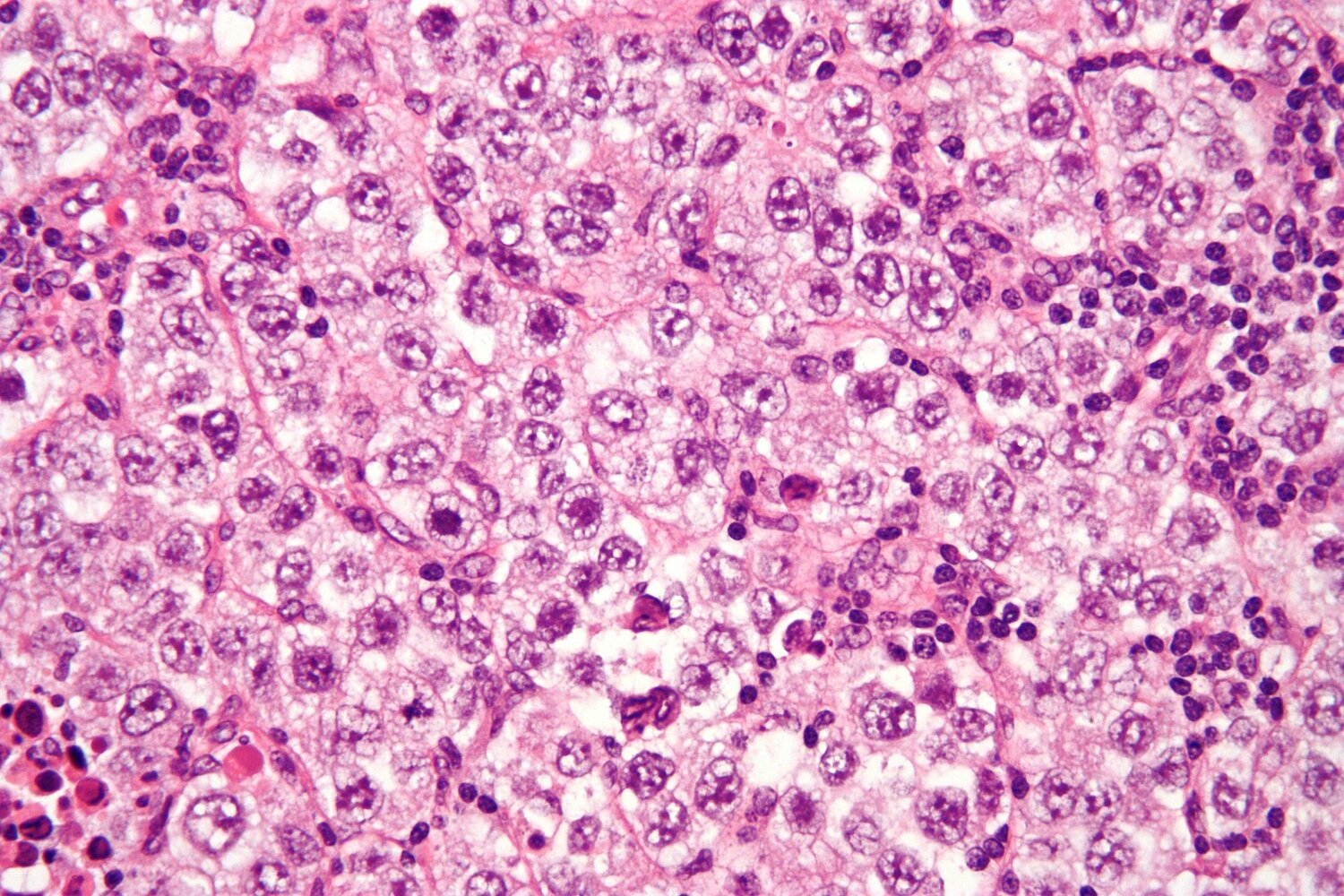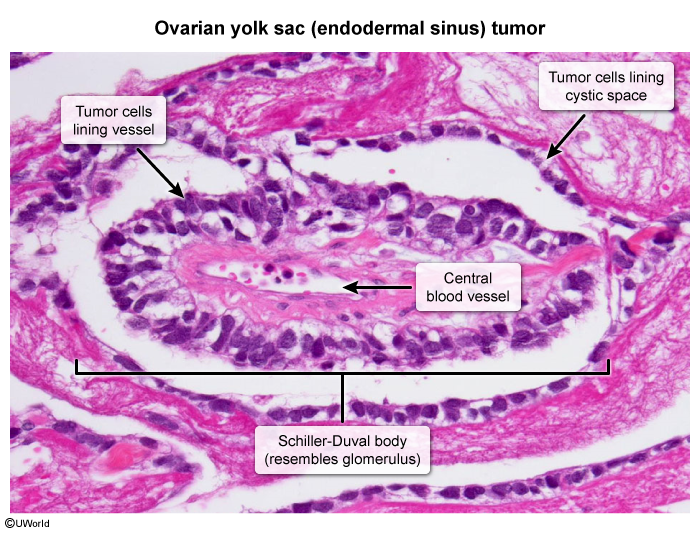Germ cell tumors
Seminoma
- Malignant tumor that has slow growth and late metastases
- Good radiosensitivity
- “Fried egg” appearance on histology

Mnemonic
Semen eats egg.
Testicular choriocarcinoma
- Extremely high levels of HCG, causing HCG-related symptoms
- HCG overproduce estrogen → Gynecomastia
- Paraneoplastic hyperthyroidism: alpha subunits of HCG and TSH are identical, enabling weak stimulation of the TSH receptor in tumors with HCG overproduction.
Yolk sac tumor
- High levels of AFP
- Microscopy: Schiller-Duval bodies (perivascular glomeruloid structures)
 Cuboidal cells are organized in a solid pattern. A central blood vessel is surrounded by germ cells, resulting in a glomerulus-like appearance (Schiller-Duval body).
Cuboidal cells are organized in a solid pattern. A central blood vessel is surrounded by germ cells, resulting in a glomerulus-like appearance (Schiller-Duval body).
Tip
HCG is always elevated in choriocarcinoma and sometimes elevated in seminoma. AFP is always elevated in yolk sac tumors. Both AFP and HCG may be elevated in mixed germ cell tumors.
Non–germ cell tumors
Leydig cell tumor
- Microscopy: Reinke crystals (eosinophilic cytoplasmic inclusions)

Extragonadal germ cell tumors
- Definition: primary germ cell tumors that arise outside of the gonads, anywhere along the body’s midline from the pineal gland to the coccyx.
- Epidemiology: 5–10% of all germ cell tumors; mostly affects young males
- Location
- Midline organs
- Mediastinal > retroperitoneal > intracranial (pineal gland and suprasellar region)
- Sacrococcygeal teratomas
- Most common in infancy or early childhood
- Symptoms
- Chest pain, dyspnea (on exertion), cough
- Diagnosis
- Testicular ultrasound: to rule out gonadal primary tumor
- Tumor markers: alpha fetoprotein (AFP) and human chorionic gonadotropin (HCG)
- Tumor biopsy (confirmatory)